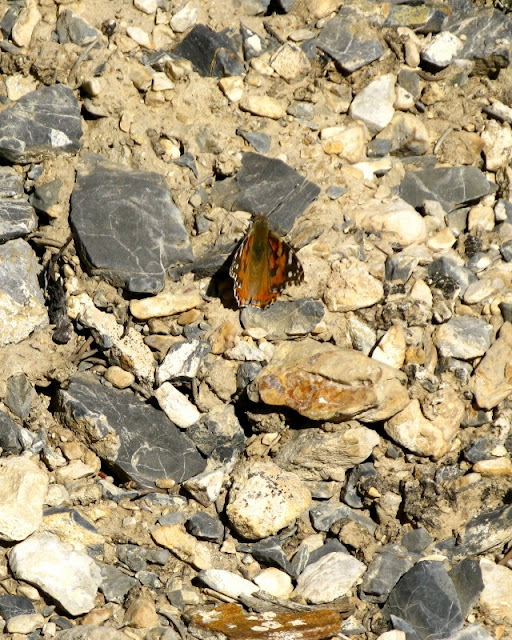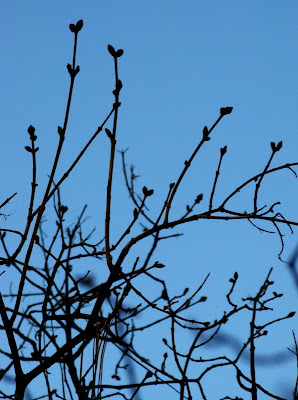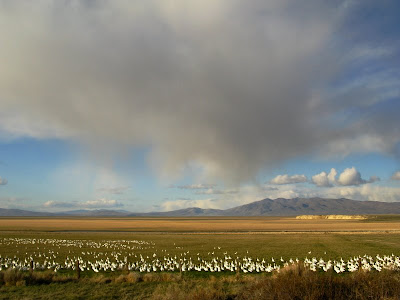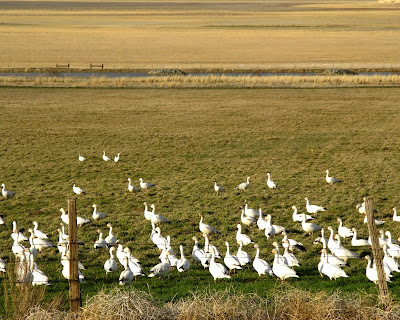
The
mountain mahogony, this particular one
first seen here, is a wonderful tree common at higher elevations in Nevada and other parts of the intermountain west, often in areas just below tree line. It's
plant-association range in Nevada is from the upper sagebrush zone into the piñon-juniper zone to just below tree line, sometimes with limber pine and other high-elevation trees.
Elevation range in Nevada is commonly from 1200 to 2700 m (3900 to 8850 ft), but it can be found as high as 3050 m (10,000 ft).
I first really noticed mountain mahogany while working out in the field one summer in the
Deer Lodge or Stateline mining district, a silver-gold district located on the Nevada-Utah state line, due east of
Pioche. At Stateline, silver and gold occur in quartz veins in Tertiary volcanic rocks - rhyolite and andesite - and particular quartz veins in the area contained the first chlorargyrite I ever saw in real life, outside a mineral collections or museums.
Chlorargyrite, sometimes called cerargyrite, is a somewhat rare silver-chloride mineral formed through supergene processes.
It was still early in the summer when we arrived, having moved north from our previous camp south of Caliente. A crew-leader had already found some uranium and the company had already staked a small number of claims. I was briefly involved in the claim staking, which meant I was running lines in rocky terrain through dense underbrush that was composed mainly of mountain mahogany bushes and trees, although I didn't know it at the time because I was so involved in keeping the lines straight with Brunton compass foresights and backsights. Later, a real claim staking crew came in and re-surveyed our claims while staking more.
The uranium occurence was found from the air, by helicopter, using a spectrometer that measured U, Th, K, and total counts. The occurrence was centered on one claim owned by an individual prospector, with the anomalous uranium contained in a mysterious high-level, quartz-eye rhyolite intruding a Tertiary volcanic pile of ash-flow tuffs and flow-dome complexes. The intrusive was limited in its known surface extent, and we wanted to find more of it.
We set about geologic mapping, four young geologists driving to the property from camp every day in one half-ton, four-wheel-drive pickup, over rocky dirt roads that made our front-seat crowding almost unbearable. Sometimes we could get a Las Vegas rock-and-roll radio station part way up the mountain for driving entertainment, sometimes not.
The mountain mahoganies were concentrated especially on
a northwest- to north-trending ridge line just barely inside the Nevada border. I especially remember the long, north-trending part of the ridge, where the patches of mountain mahogany seemed especially dense, and where the ridge was underlain by flow-banded rhyolite weathering into thin, shaly-looking chips.
I walked up and down and across that ridge numerous times, around and under many scrubby to standing-tall mountain mahoganies, over and across outcrops and subcrops of pinkish rhyolite. I developed an association between the scent of mountain mahogany - distinctive everywhere across
its range - and flow-banded rhyolite. For years, anytime I would catch that scent on the wind, especially on hot summer days, I'd automatically start looking for rhyolite. I wonder if the same thing would happen now, if I went back to the source of the association, back to that long ridge high above Deer Lodge Canyon.
Some References:Stotebury, H. W., 1921,
Report on the Stateline Mining District, Iron Co., Utah, Lincoln, Co., Nevada: scanned by Nevada Bureua of Mines and Geology, 9 pages.
The Uranium Occurrence:
260. Peak claims (nos. 1-1 2)Location: T. 1 N., R. 71 E.; near the summit of the high peak at the head of Deer Lodge Canyon.
Development: Bulldozer cuts.
Radioactivity: Background = 0.02 mR/hr.; High = 0.20 mR/hr. One sample contained 0.58 percent cU30s (but only 0.12 percent eU308).
Geology: Autunite and torbernite occur in 1- to 2-inch siliceous stringers in a white to gray rhyolite flow. Some iron-oxide staining [hematite] is present.
References: U. S. Atomic Energy Comm. Prelim. Reconn. Rept. 3535; Tschanz and Pampeyan, 1969.
from Garside, L. J., 1973,
Radioactive mineral occurrences in Nevada: Nevada Bureau of Mines and Geology Bull. 81, page 73.
More Deer Lodge Photos
 Two years ago today, just past the western sign marking the turnoff to Sand Mountain, near Churchill County milepost 47 east of Fallon, Nevada...
Two years ago today, just past the western sign marking the turnoff to Sand Mountain, near Churchill County milepost 47 east of Fallon, Nevada... ...the loneliest phone in America - or at least the sign for the loneliest phone - was in plain view on Highway 50 on the side of the road. The two photos above were taken on April 30, 2007.
...the loneliest phone in America - or at least the sign for the loneliest phone - was in plain view on Highway 50 on the side of the road. The two photos above were taken on April 30, 2007. This photo of the sign on the east side of the Sand Mountain turnoff was taken on December 28, 2006. The sign is a bit shot up, which is a fairly standard thing in Nevada. I have no photos of the so-called loneliest phone, but you can read about it here and here, and see a great photo of it here. It is described as a microwave, solar-powered phone.
This photo of the sign on the east side of the Sand Mountain turnoff was taken on December 28, 2006. The sign is a bit shot up, which is a fairly standard thing in Nevada. I have no photos of the so-called loneliest phone, but you can read about it here and here, and see a great photo of it here. It is described as a microwave, solar-powered phone. By April 12, 2008, the signs and phone were both gone. The phone was removed by the phone company, according to this site, for getting shot up by passing drivers and Sand Mountain recreators too many times. I don't know exactly when the phone disappeared, and I never made a call from it.
By April 12, 2008, the signs and phone were both gone. The phone was removed by the phone company, according to this site, for getting shot up by passing drivers and Sand Mountain recreators too many times. I don't know exactly when the phone disappeared, and I never made a call from it.






























 Turkey vulture
Turkey vulture
















